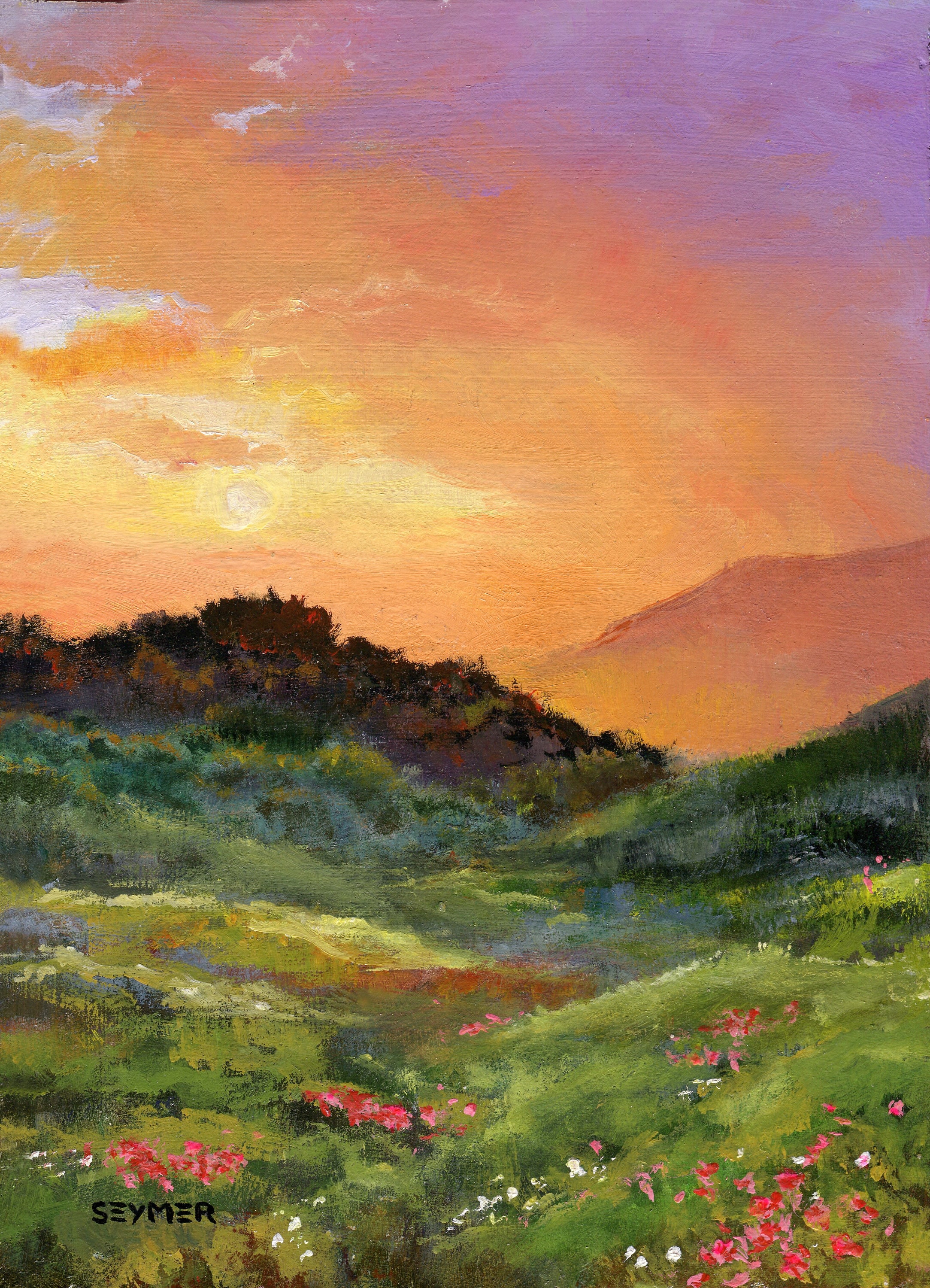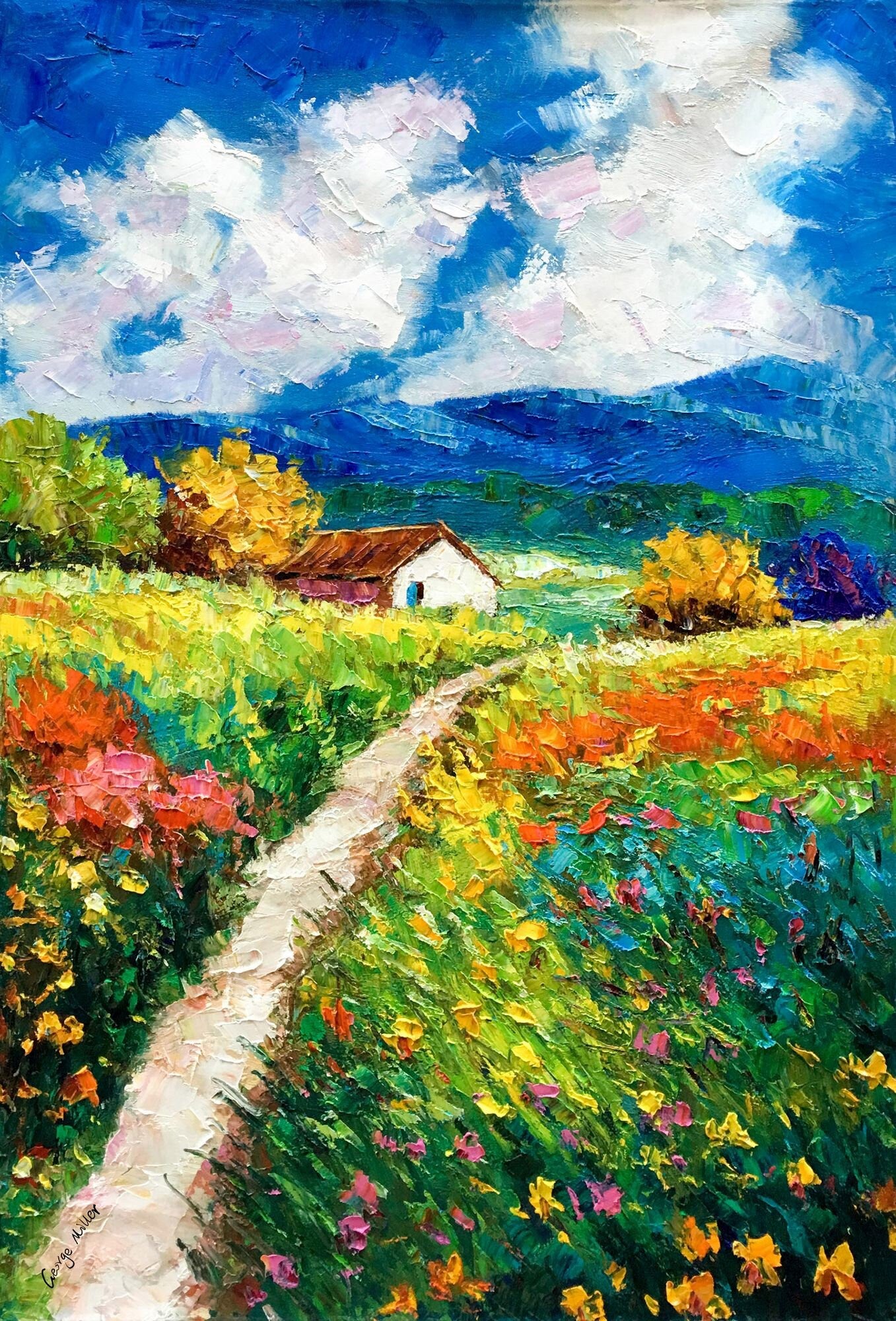Artist-Made Creations: Oil Paintings for Sale by Painters
Artist-Made Creations: Oil Paintings for Sale by Painters
Blog Article
Checking out Everything About Oil Paints: An Overview to Understanding Their Beauty and Value
Oil paints have actually astounded audiences for centuries, offering a look right into the creative mastery of various eras. Their abundant background is intertwined with ingenious strategies and profound emotional expression. Recognizing the products and methods behind these artworks can boost gratitude. Furthermore, the market for oil paints provides possibilities for capitalists and enthusiasts alike. As one discovers this interesting globe, the question arises: what makes an oil paint genuinely important?
The Background of Oil Painting: A Journey Via Time
Although oil painting has origins that date back to ancient times, it truly grew throughout the Renaissance, when musicians discovered its versatility and rich shade potential. Early instances can be traced to the 7th century, with strategies advancing especially throughout societies. The tool became popular in Northern Europe in the 15th century, especially with the works of artists like Jan van Eyck, who spearheaded its usage for thorough realistic look and vivid shades. This duration marked a departure from tempera paints, permitting better depth and structure. As oil paint spread, it affected numerous musicians, leading to masterpieces by renowned figures such as Leonardo da Vinci and Rembrandt. The medium's heritage continues, forming the art world well right into modern-day times.
Comprehending Oil Repaints: Products and Techniques
As artists discover the world of oil paints, they come across a diverse selection of products and techniques that define this tool. The primary parts of oil paint include pigments, which supply shade, and drying oils, such as linseed, that bind the pigments and promote application. Different additives can change the paint's texture and drying time, improving adaptability. Methods like glazing, where transparent layers are developed up, and impasto, which entails using thick paint, enable different aesthetic results. Furthermore, the use of brushes, combination blades, and also fingers can produce special structures and surfaces. Recognizing these techniques and products enables artists to totally reveal their creativity and accomplish the desired effect in their art work.
The Duty of Color in Oil Paints
Shade plays an essential role in oil paintings, influencing both aesthetic allure and psychological resonance. Comprehending color concept essentials, including the connections in between colors, can boost an artist's ability to convey mood and ambience. Furthermore, mastering shade blending techniques enables for better deepness and splendor in a painting's scheme.

Color Concept Basics
Comprehending shade concept is crucial for musicians collaborating with oil paints, as it develops the foundation for developing harmonious and aesthetically engaging structures. Shade concept incorporates the research of how shades communicate, the shade wheel, and the connections between key, secondary, and tertiary shades. Musicians make use of complementary colors to enhance contrasts and develop focal factors, while analogous colors promote unity and cohesiveness within a piece. Furthermore, the principles of warm and cool colors influence the assumption of deepness and space in a painting. Grasping these principles permits musicians to adjust shade properly, directing the visitor's eye and connecting their intended message. Mastery of color concept eventually improves a musician's ability to share emotions and ideas with their job.
Emotional Effect of Color
The psychological effect of shade in oil paintings plays a crucial duty in exactly how visitors perceive and link with art work. Colors evoke details sensations and moods, influencing the viewer's emotional state. For circumstances, cozy tones like reds and oranges can produce a feeling of warmth and power, while cool tones such as blues and greens typically evoke peace or self-contemplation. Artists strategically choose shade schemes to boost narrative components, leading the audience's psychological trip. The saturation and contrast of colors better enhance these impacts, attracting focus and developing emphasis. Ultimately, the interaction of shades in oil paints not only boosts their aesthetic appeal yet likewise offers as a powerful medium for psychological expression, enriching the visitor's experience and analysis.
Color Mixing Techniques
While several elements of oil paint add to the general composition, grasping color mixing techniques is vital for attaining desired impacts and deepness. Shade mixing can be come close to with various methods, consisting of the subtractive and additive procedures. Additive mixing entails integrating colors of light, while subtractive mixing relies upon pigments, where colors mix to create new shades. Musicians commonly use a limited scheme to create harmonious jobs, recognizing the connections in between main, second, and tertiary shades. Methods such as glazing and scumbling better improve deepness and luminosity. By masterfully blending colors, a musician can stimulate feelings, develop focal factors, and accomplish a sense of realistic look, eventually raising the painting's emotional and aesthetic impact.
Famous Oil Painters and Their Iconic Functions

Renowned for their mastery of color and method, oil painters have developed some of one of the most well known art work in background. Prominent artists like Vincent van Gogh captivated audiences with his stirring brushwork in "Starry Night," while Claude Monet's "Perception, Daybreak" laid the foundation for Impressionism. Leonardo da Vinci's "Mona Lisa" stays a long-lasting icon of artistic brilliant, showcasing his skill in catching human expression. Meanwhile, Rembrandt's "The Evening Watch" highlights his innovative use light and shadow. Various other noteworthy numbers include Pablo Picasso, that transformed modern art with his bold trial and error in works like "Les Demoiselles d'Avignon," and Georgia O'Keeffe, whose vivid depictions of blossoms and landscapes helped specify American modernism. Each artist's unique design contributed significantly to the oil painting landscape.
Exactly how to Review the Top Quality of an Oil Painting
Evaluating the top quality of an oil paint entails a careful evaluation of workmanship methods, in addition to an analysis of color and structure. Observing brushwork, layering, and the application of paint can expose the musician's ability level. In addition, the interplay of shades and the overall arrangement of aspects add substantially to the painting's aesthetic worth.
Analyzing Craftsmanship Methods
A meticulous evaluation of workmanship methods is vital for establishing the quality of an oil paint. Evaluators must first take a look at the application of paint; thick, textured brushstrokes might suggest a skilled hand, while overly uniform applications can indicate a lack of deepness. oil paintings for sale. The layering strategy is likewise crucial; the existence of glazes and varied density can boost luminosity and intricacy. Additionally, the quality of the products utilized, such as the canvas and pigments, plays a substantial role in durability and overall aesthetic. Interest to detail in components like edges and changes in between colors reflects the musician's commitment to their craft. Eventually, these strategies add to the painting's emotional effect and market price, functioning as indications of the musician's skill and intent
Examining Shade and Make-up
While reviewing the quality of an oil paint, one must concentrate on the interaction of color and make-up, as these elements are essential to the artwork's overall effect. Color choices can develop and stimulate emotions state of mind; for that reason, the musician's palette ought to be examined for consistency and contrast. A healthy make-up directs the viewer's eye and develops a sense of unity. Musicians often utilize techniques like the regulation of thirds or leading lines to boost aesthetic rate of interest. In addition, using light and darkness can include depth, boosting the three-dimensionality of the paint. Eventually, an effective oil painting weds shade and structure, engaging the audience and inviting a deeper appreciation of the musician's vision and technique.
Caring for and Preserving Oil Paintings
Proper care and conservation of oil paints is important for maintaining their honesty and durability. To protect these art work, it is essential to present them away from direct sunlight, which can create fading and staining. Maintaining a stable environment with controlled temperature and moisture further help in preventing damages. Cleaning up ought to be done delicately utilizing a soft, dry fabric, staying clear of any type of harsh chemicals that might hurt the paint or varnish. Routine evaluations for indications of degeneration, such as fracturing or flaking, are recommended. When storing or moving oil paints, appropriate padding and framing are necessary to prevent physical damage. Eventually, attentive treatment contributes to the visual appeal and value of oil paintings with time.
The Marketplace for Oil Paints: Investing and accumulating
Comprehending the market dynamics for oil paintings is crucial for capitalists and enthusiasts alike. The worth of these artworks is influenced by various factors, consisting of the musician's online reputation, historical value, and existing patterns. Collection agencies usually look for pieces that resonate personally while considering potential gratitude in worth. Galleries and public auctions act as main venues for trading, with costs changing based on need and rarity. Purchasing oil paints needs study into the market, along with an understanding of credibility and provenance. In addition, emerging artists may supply possibilities for significant returns, while established names can regulate high rates. In general, a tactical approach to gathering can generate both aesthetic satisfaction and economic rewards.

Often Asked Inquiries
What Are the Environmental Influences of Oil Painting Materials?
The environmental influences of oil paint materials include the launch of volatile natural compounds (VOCs), dangerous waste click here generation, and source removal for pigments. These elements add to air pollution and eco-friendly deterioration, raising concerns among environmentally aware musicians and consumers.
How Do Various Canvases Influence Oil Paint Outcomes?
Various canvases affect oil painting results considerably. Texture, absorbency, and surface area quality can alter paint application, drying times, and shade vibrancy. Musicians usually select specific canvases to achieve preferred impacts and improve their imaginative expression.
Can Oil Paintings Be Brought Back if Damaged?
If harmed, Oil paintings can without a doubt be restored. Expert conservators use different techniques to fix rips, clean surfaces, and address discoloration, making sure that the artwork maintains its initial charm and worth for future generations.
What Are the Indications of an Original Oil Paint?
The indications of an initial oil paint consist of visible brush strokes, structure variations, and an unequal canvas weave (oil paintings for sale). In addition, authenticity might be verified via provenance, signatures, and the existence of a varnish layer distinct to oil tools
How Has Technology Influenced Modern Oil Paint Techniques?
Technology has considerably affected modern oil paint methods by presenting electronic devices for planning, boosted materials for structure and long life, and on-line systems for sharing and offering art, therefore increasing artists' imaginative opportunities and audience reach. Oil paint has origins that date back to ancient times, it absolutely flourished throughout the Renaissance, when artists uncovered its convenience and rich color potential. The psychological effect of shade in oil paintings plays an essential function in just how audiences connect and perceive with art work. While numerous elements of oil painting add to the total structure, grasping color mixing methods is crucial for attaining desired effects and depth. Reviewing the top quality of an oil paint entails a careful evaluation of craftsmanship methods, as well as an analysis of color and composition. While reviewing the quality of an oil paint, one have to concentrate on the interplay of shade and structure, as these aspects are basic to the art work's total influence.
Report this page